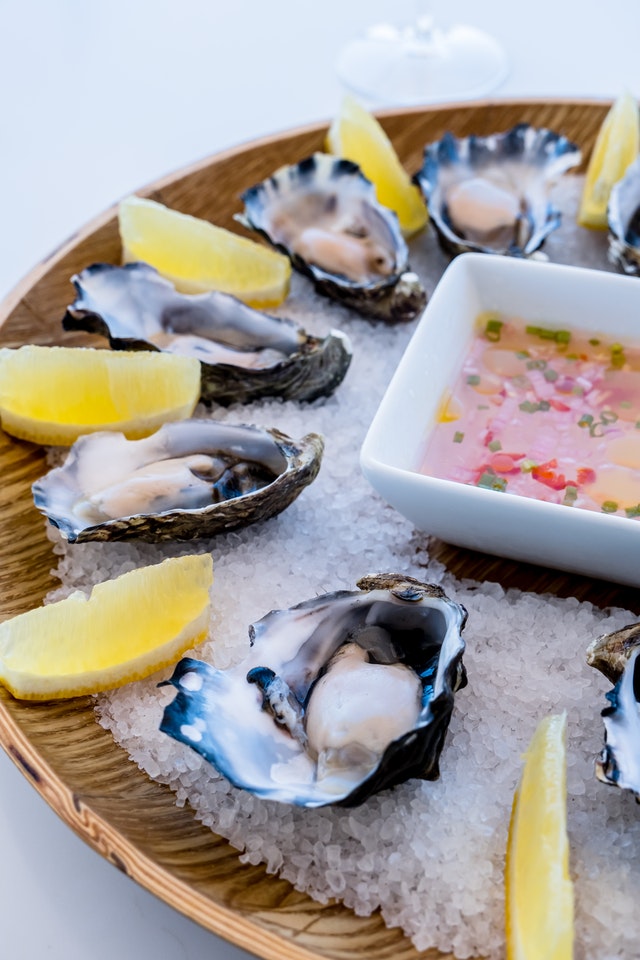Foods Consumed in France – What Do The French Eat? Here in America, we’re constantly being told of an obesity epidemic and scary statistics ring constantly in our ears. It seems our serving sizes aren’t the only thing that’s larger than most countries; we are larger too!
6 Diet Secrets Of The French
So, it’s no wonder you may be fascinated with the diet of the French and how they stay slim and fit. What are their secrets? What do the French eat? Here are 6 diet secrets of the French that you can implement to live a happier and healthier life to achieve the best version of you!
1. Portion Sizes: No, You Don’t Need The Largest Size
It’s no secret that American portion sizes are out of control. According to NBC News, when the American cookbook “Joy Of Cooking” was matched with a similar French cookbook, portion sizes were 25% bigger and vegetable portions were 24% smaller.
No, the French aren’t slim by some magical potion or a well-hidden secret; they simply eat smaller, adequate amounts. Funnily enough, while the French portion sizes may seem “too small” compared to the American size, the amount that the French eat is actually normal sized.
Smaller portion sizes allow the French to truly savor their meal to the point of contentment, not gluttony. In fact, eating smaller amounts is greatly associated with increased food appreciation and satiety. There have been many scientific studies, like this one, that link smaller portion sizes and satiety.
2. What do the French eat? Vegetables, vegetables, vegetables!
To answer the question “what do the French eat?”: vegetables, or legumes and fruits!
The French and vegetables have a unique relationship. The French like to include legumes whenever they can and in various ways.
Dishes like ratatouille (a stewed vegetable dish) and épinards au gratin (a cheesy, spinach, lasagna-type dish) are staples in French culture and are great examples of how the French love to incorporate vegetables in their diet. In schools, students are given lots of fresh vegetables in their cafeteria lunches.
Fruits are also a big staple of the French diet. Fruit pastries, fruit jams, and fresh fruit are all big parts of the French diet. For breakfast, it is a common occurrence to have fruit jam with bread or fresh fruits. The fruits that the French consume do depend on what’s in season, but fruits like apples, peaches, and bananas are year-round staples.
While getting your fruits and vegetables in may sound like obvious advice, it is often overlooked and disregarded by many Americans.
According to a 2017 study by the CDC, only 1 in 10 American adults get enough fruits or vegetables. The French are serious about their fruit and vegetable intakes and that may help explain why France’s obesity rates and heart disease rates are significantly lower. Eating fruits and vegetables as snacks are a great way to satisfy your hunger without an excess of calories.
Furthermore, because the French eat lots of fruits and vegetables as snacks, they don’t have much of an opportunity to reach for the same processed junk that Americans reach for, resulting in a much healthier lifestyle.
3. Take Your Time! There’s No Rush!
One unconventional and little-known secret of the French is that they take longer to eat their meals. Eating slower not only helps signal your hunger cues, which in turn helps you feel full faster, but also helps you be more mindful and appreciative of the food.
In France, many shops and businesses close down for an hour or 2 (or even 3!) during lunch time, a phenomenon that is oftentimes frustrating for American expats. This longer déjeuner break allows them to savor their food as they know they are not in a rush.
This also helps them feel more in tune with their hunger cues, allowing them to stop when they are full instead of reaching for more and then getting a stomachache later. In French schools, pupils get an hour off for lunch and on Fridays, they get 2 hours off.
In Western societies, lunch déjeuner are usually short and in between tasks, creating a culture of scarfing down food and an ignorance of hunger cues. Take some advice from the French and eat your food mindfully and slowly at a table, taking care to notice when you feel full.
Once you eat more slowly, you will realize when you are actually full and stop, avoiding the possibility of overeating.
4. How Healthy? All Things Nutri-scales
In 2017, France implemented Nutri-scales, “A front-of-pack label that informs about the nutritional quality of a product,” according to this article. The scale is from dark green to dark orange and is represented by letters A to E. The scale is straightforward and easy to understand; the dark verte color associated with the letter “A” means that the food contains excellent nutritional value.
On the other hand, the dark orange “E” means that the food contains little to no nutritional values.
Using these Nutri-scales, the French have a better ability to gauge what foods are of nutritional value and are healthy and which foods are not. This leads to the French being able to make better food choices for their health.
So, to learn from the French, we may not have Nuri-scales, but we can read ingredients and look at the calories, fats, and sugar and sodium content to help us make better food choices.
5. Food Doesn’t Have To Be On-Demand All The Time
In America, we live in the age of convenience and on-demand food. We can cater to our cravings with 24 hours gas stations and food delivery services. Whether it’s 2 am or 2 pm, there
is a way for us to find a way to eat the food that we want at that very moment. Unfortunately, this convenience and too easily accessible culture of unhealthy foods has contributed greatly to the obesity epidemic in America and overall levels of unhealthiness.
In France, delivery food services like Uber Eats aren’t as common, and many restaurants do not offer food delivery services. Furthermore, businesses and restaurants close much earlier, reducing the ability to get food at any hour.
So, instead of getting chips, burgers, and candy at 3 am, you may be limited to what’s currently in your home, which could lead to healthier food choices.
To learn from the French, we should avoid regularly exploiting the convenience of on-demand food and instead use on-demand foods as treats.
Every once in a while, it’s completely fine to order in your favorite cravings at 2 am, but for most days, try and take advantage of what’s in your home at that moment. You may end up making healthier alternatives and will have avoided eating out!
6. Less Processed, More Wholesome
There’s a pretty big problem with American culture: the overconsumption of processed food. If one goes to any supermarket in America, they will see shelves upon shelves stacked full of processed foods containing very little nutritional value.
Overly-processed foods contain many chemicals, little nutrients, and often include too high levels of sodium and sugar, or sucre. So, it is obvious why processed foods can be bad for you. With the over saturation of processed foods in the American food market, it is no wonder many Americans have trouble eating healthy and staying fit.
However, what do the French eat? On average, they eat less processed foods and more wholesome food choices; resulting in a healthier overall life.
The French consume more fresh ingredients like vegetables and fruits and make easy and simple swaps like whole grains over refined grains.
We can eat less processed foods and make more wholesome food choices by making choices like switching sugary cereal for oatmeal with fresh fruits, switching a McDonalds milkshake for a fruit smoothie, and making your own sauces and dressings.
So, How Can We Be More Like The French?
By looking at what the French eat and how they eat! As you read earlier, by making simple, yet effective changes in your lifestyle, you can achieve better health and a happier life.
Try cooking more homemade meals to avoid the processed, overly convenient food of our society today.
Furthermore, try eating more slowly to increase food appreciation and better recognize your hunger signals.
While Nutri-scales may not be implemented in America, we should still learn how to properly read nutrition labels to make better food choices.
Practice portion control and increase your fruit and vegetable intake. If the French can achieve an effortless healthy lifestyle, so can you!
French Words used
Sucre = Sugar
Legumes = Vegetables
Ratatouille = Stewed vegetable dish
Épinards au gratin = Cheesy, spinach, lasagna-type dish
Déjeuner = Lunch
French Words pertaining to food
L’huile = Oil
Céréales = Grains
Viande = Meat
Fromage = Cheese
Pain = Bread
Poisson = Fish









